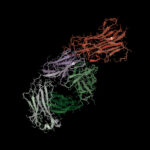As useful stand-ins for biologics targeting a range of inflammatory diseases, biosimilars have made significant inroads across Europe as less expensive alternatives. Denmark, for example, realized a cost savings of 64% after instituting a mandatory national switch from the originator infliximab to its biosimilar counterpart.
In the U.S., however, a considerably smaller fraction of rheumatologists are prescribing these biologic alternatives to their patients. Increasing the trend, and realizing the expected cost savings that have, thus far, largely failed to materialize, experts say, will depend upon the resolution of multiple pricing, clinical, regulatory and educational barriers.
A recent analysis in Arthritis & Rheumatology crystalized the lopsided U.S. market.1 The researchers pored over roughly 1.1 million tumor necrosis factor inhibitor prescriptions or infusions from Jan. 1, 2016, to March 31, 2019, in a large commercial insurance database. The study reviewed the uptake of the biosimilars infliximab-dyyb, developed by Celltrion and marketed as Inflectra in November 2016, and infliximab-abda, launched as Renflexis by Samsung Bioepis in July 2017. Together, the two biosimilars accounted for just 0.9% of market share through the first quarter of 2019.
The amount paid by the insurer for the biosimilars vs. the biologic originator began to diverge only in the third quarter of 2018. The widening gap in cost was perhaps triggered by the arrival of unique Healthcare Common Procedure Coding System codes and, thus, the ability of biosimilar manufacturers to finally compete, the study authors suggest. The modest savings, though, may have reflected “the smaller purchasing power of US payers relative to single payer systems,” they concluded.
Study co-author Seoyoung Kim, MD, ScD, associate professor of medicine at Brigham and Women’s Hospital, Boston, says that without a substantial difference in cost, “there is no huge incentive for patients or physicians or healthcare systems to use biosimilar infliximab vs. [the] branded one.” Significantly larger savings, she and her colleagues maintain, may require more systemic changes to the nation’s pharmaceutical market.
An editorial commenting on Dr. Kim’s study noted that of the 13 biosimilars approved by the U.S. Food & Drug Administration (FDA) with indications for rheumatic diseases, only two had reached the commercial market by January 2020.2 Inflectra (infliximab-dyyb) and Renflexis (infliximab-abda) are competing against Remicade (infliximab), while a third biosimilar, Pfizer’s Ruxience (rituximab-pvvr), is expected to become available later this year.
“In other words, biosimilars have largely failed to launch in the United States,” writes Jinoos Yazdany, MD, MPH, professor of medicine and chief of the Division of Rheumatology at Zuckerberg San Francisco General Hospital.
In fact, as spending on biologic drugs reached $125 billion per year in the U.S. in 2018, with Humira (adalimumab) sales alone representing $18 billion of that total, biosimilars were netting only 9% of the initial $1 billion in savings projected by the Congressional Budget Office.


